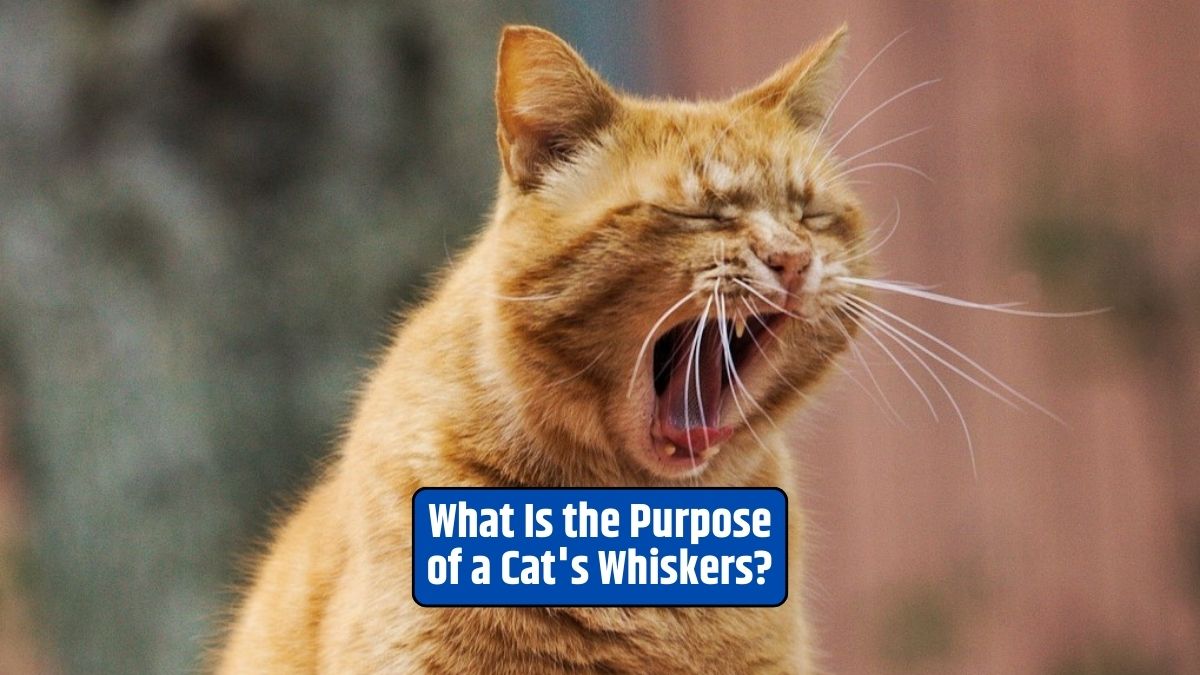Cats are mysterious and intriguing creatures, and one of their most distinctive features is their whiskers. These long, delicate hairs that sprout from a cat’s face have a vital purpose.
In this article, we’ll explore the world of cat whiskers, understanding their function, significance, and why they are a crucial aspect of feline physiology.
The Anatomy of Cat Whiskers
Cat whiskers, scientifically known as “vibrissae,” are not ordinary hairs. They are specialized sensory organs deeply rooted in a cat’s face, and they serve various functions that go beyond aesthetics.
- Location: Whiskers are typically located on a cat’s upper lip, but they can also be found above the eyes, on the cheeks, and at the back of the front legs.
- Composition: Unlike regular hairs, whiskers are much thicker and stiffer. They are deeply embedded in a cat’s skin, connected to highly sensitive nerve endings.
Sensory Functions
1. Navigation
Cat whiskers are like a built-in GPS system. They help cats navigate their environment and understand the spatial layout. When a cat brushes its whiskers against objects or surfaces, it receives tactile feedback.
This allows them to determine if they can fit through a tight space, whether an object is within reach, or if they are getting too close to a potential threat.
2. Detection of Changes
Whiskers are exceptionally sensitive to even the slightest vibrations and air currents. They can detect changes in the environment, such as approaching prey or potential dangers. This ability is particularly vital for cats that hunt in low light or darkness.
3. Emotional State
A cat’s whiskers are not static; they can move forward and backward. The position of the whiskers can be an indicator of a cat’s emotional state. Whiskers pulled back against the face might suggest fear or aggression, while forward-facing whiskers often indicate curiosity or excitement.
4. Protection
Whiskers located above a cat’s eyes act as a protective mechanism. They help prevent dust, debris, or foreign objects from coming into contact with the eyes. This is crucial for maintaining clear vision.
Common Myths
There are several misconceptions about cat whiskers, and it’s essential to dispel some of these myths:
- Cutting Whiskers: Cutting a cat’s whiskers is not recommended and can cause them distress. Cats rely on their whiskers for everyday functions, so it’s best to leave them untouched.
- Whisker Length and Age: The length of a cat’s whiskers does not necessarily indicate its age. Whisker length can vary among individual cats.
Conclusion
Cat whiskers are more than just charming features; they are the feline equivalent of a sensory superpower. These remarkable sensory organs play a vital role in a cat’s life, helping them navigate, communicate, and stay safe.
Understanding the importance of cat whiskers provides us with deeper insights into the fascinating world of our feline companions.
FAQs
Can cat whiskers grow back if they are accidentally cut?
Yes, whiskers can grow back, but it may take some time. Cutting a cat’s whiskers is not recommended, as it can cause them stress and discomfort.
Do all cats have the same number of whiskers?
Cats typically have 12 whiskers on each side of their upper lip, but the exact number can vary among individual cats.
Are whiskers only found on a cat’s face?
Whiskers are primarily located on a cat’s face, but they can also be found above the eyes, on the cheeks, and at the back of the front legs.
Do whiskers have a limited lifespan?
Whiskers, like regular hairs, do shed and regrow, but they have a longer lifespan compared to regular hairs.
Can a cat’s whiskers become overstimulated or overwhelmed?
Whiskers are highly sensitive, but they do not become overstimulated. They provide cats with valuable sensory information about their surroundings.









